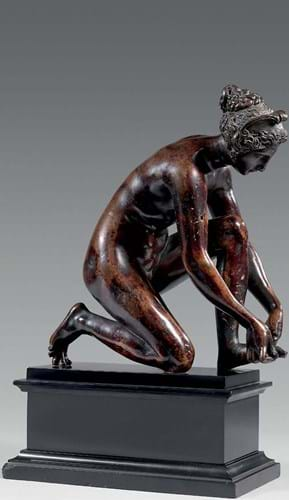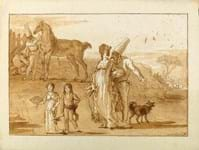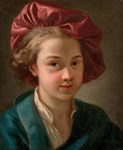
The Louvre exercised its right of pre-emption to secure at the fall of the hammer the 10in (25cm) high bronze by the sculptor Ponce Jacquiot (c.1515-70) of a naked woman pulling a thorn from her foot. It had been in the same Parisian family for at least five generations.
Postponed sale
The sculpture, which was in the catalogue with an ‘estimate on request’, was the highlight of a sale of Old Master paintings and drawings, furniture, ceramics and sculpture held by Beaussant Lefèvre (27% buyer’s premium) at the Drouot auction centre on June 9.
Originally scheduled to take place in April, it was one of many sales postponed due to the coronavirus. French and international bidders participated online and via the phones and 40 people were present in the saleroom, the maximum number allowed by current regulations.
The sculptor, known as Mâitre Ponce, was probably born in Rethel c.1515 and died in Paris in 1570. He spent three years in Rome, where he was a member of the Academy of Saint Luke, worked for Cardinal Ricci and is the only French sculptor of the period mentioned by the art historian Vasari (under the name Ponzio).
On his return to France he collaborated with the architect Jacques Androuet du Cerceau, with Germain Pilon and Primaticcio. French commissions included work at Fontainebleau, The Tuileries and on the tombs of François I, Henri II and Catherine de Medici at Saint Denis.
Roman similarities
This figure, which is dated to the mid 16th century, is related both to the famous antique bronze known as the Spinario (or Boy with a thorn) now in the Capitoline Museums in Rome and perhaps to the Venus wounded by a thorn painted by Raphael for the bathroom of Cardinal Bibbiena in Rome that was engraved by Marco Dente.
The bronze is attributable to Jacquio via a terracotta owned by the sculptor François Girardon. It is pictured in an engraving from c.1710 of Girardon’s ‘gallerie’ of artworks where it is described as a modèle de terre cuite de Paul Ponce.
That terracotta, itself rediscovered in the 20th century, is already in the Louvre.














